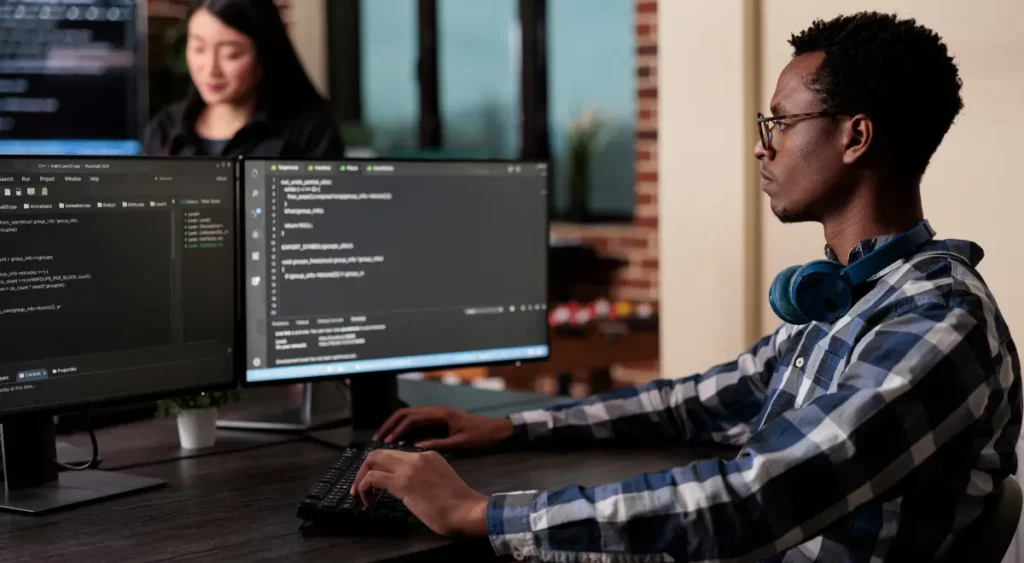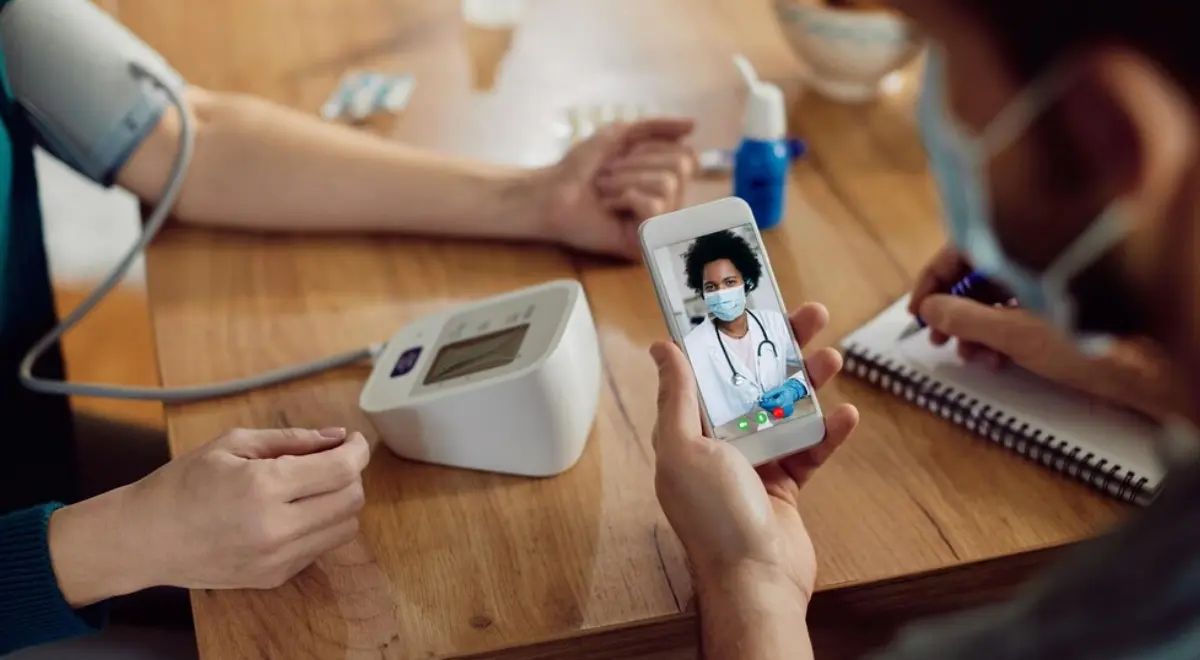Data Security and Compliance Best Practices for Remote Patient Monitoring (RPM)

As the healthcare industry continues to evolve, Remote Patient Monitoring (RPM) is becoming more common among clinicians, physicians, and providers. While the benefits of RPM are well established, one of the most significant issues health organizations implementing remote care systems confront is guaranteeing the confidentiality and privacy of patient data.
Securing patient data requires meeting compliance regulations issued by the government healthcare associations. Since patient data is always at the forefront of the remote care technology, practitioners must guarantee that they have access to and protect their patients’ health information. Compliance in RPM is governed by medical regulations, including:
- HIPAA (Health Insurance Portability and Accountability) in the United States
- FDA regulations (if applicable) for remote patient monitoring devices
In this blog, we’ll discuss the critical aspects of data security within remote patient monitoring systems and the compliance requirements to build trust and ensure a successful RPM program.
Table of Contents
ToggleImportance of Data Security in RPM
Data security in healthcare is critical throughout the healthcare model. Even minor security breaches can significantly impact patient trust in healthcare organizations.
When patients’ health data is transmitted to RPM systems, they expect it to be secure, discreet, and protected. Any gap in ensuring security measures can significantly impact healthcare providers’ ability to monitor patients remotely, thereby affecting patient care outcomes.
Best Practices That Help Maintain RPM Data Security
When it comes to maintaining RPM data security for over-the-cloud remote care software, implementing comprehensive security measures lower the risk of data breaches while also improving data security in healthcare. Some of the best RPM data protection strategies include:
- Data Encryption: Data encryption is critical for securing patient information in remote patient monitoring systems. It works by encrypting data during transmission and storage via complicated algorithms, making it hard to understand for unauthorized parties trying to access patient information without a decryption key. Common healthcare data encryption protocols, such as the Advanced Encryption Standard (AES-256) offer robust cryptographic protection for sensitive health data.
- Data Storage and Transmission Security: Secure storage techniques are critical for protecting patient data from unwanted access or breaches. Healthcare providers should opt for remote care software that uses secure storage technologies, such as encrypted databases or secure cloud storage, to protect and store patient data. Also, taking regular backups and staying updated with the latest data redundancy methods, such as regular data audits and cleanup ensure that patient data is available and protected even in worst cases of system failure. Implementing secure data transfer protocol like Transport Layer Security (TLS) is a must.
- Access Control: As the name suggests, access control limits the access to patient data, allowing only authorized healthcare providers to access patient information. Multi-Factor Authentication (MFA) boosts RPM security by requiring users to verify identity, such as passwords, biometric verification, or one-time codes, before accessing patient data. This helps to prevent unauthorized access, even in case of compromised credentials.
- Security Assessments and Audits: Having a proactive approach to healthcare cybersecurity is critical for ensuring the integrity of remote patient monitoring systems. Regular security audits detect flaws in systems before unfavorable conditions arise. Audits allow transparent examination of the security levels in RPM system and help resolve vulnerabilities on time.
- Regular Software Updates: Regularly updating software is critical for addressing security flaws and helps secure healthcare systems. Keeping software updated with the latest security patches reduces the risk of breaches and assures the protection of patient data in RPM systems.
- User Education and Training: User education and training are critical components in developing security measures in a remote patient monitoring software. Healthcare providers and patients should be regularly trained on data security best practices, including generating secure passwords, avoiding phishing attacks, and identifying dubious links or emails to reduce the risk of security breaches.
Importance of Compliance in Remote Patient Monitoring (RPM)
Compliance in RPM plays a significant role in developing a fully compliant remote patient monitoring software. It guarantees that the software complies with legal requirements and ensures patient privacy. The regulatory standards that healthcare compliance must meet include:
HIPAA Compliance: In the United States, HIPAA requires healthcare software to meet the security standards related to patient health information. All healthcare software companies and service providers must follow HIPAA requirements to protect patient data confidentiality, integrity, and availability. HIPAA compliance involves a set of interrelated rules and regulations that healthcare providers must integrate into their healthcare practice.
These rules ensure the privacy and security of protected health information. HIPAA regulations require compliance from two types of organizations:
- Covered Entities: Healthcare providers, healthcare cleaning providers, and healthcare carriers.
- Business Associates: Billing companies, cloud storage providers, email hosting services, and more.
FDA Regulations: These regulations are for remote patient monitoring devices categorized as medical devices that are required to comply with the U.S. Food and Drug Administration (FDA) regulations. RPM devices categorized as medical devices must comply with FDA regulations, ensuring safety and effectiveness.
Best Practices That Help Maintain Compliance in RPM
Maintaining compliance in remote patient monitoring is critical for healthcare providers to protect patients’ data, privacy, and meet regulatory standards. Here are the major factors that help you maintain compliance with your RPM system:
- Data Security is Integral: Since RPM uses a number of medical devices to establish a connection between physicians and patients, its setup and real-time data transmission increase the possibility of a cyber attack. Implementing comprehensive data security measures such as data encryption, multi-factor user authentication, security patches, regular updates, controlled access, and other practices helps maintain both medical device security and compliance.
- Vendor Compliance and Diligence: When hiring a third-party provider for remote patient monitoring, ensure that the vendor meets all compliance and regulatory criteria to secure and safeguard patient data. Vendors are evaluated based on frameworks, data security measures, and their reputation, which helps avoid any risks connected with outsourcing RPM services. Doing due diligence for vendor compliance helps ensure the RPM solution provider satisfies all relevant data security and compliance standards.
- Compliance Gap Analysis: The term compliance gap analysis refers to the process of identifying an organization’s existing level of compliance with laws, regulations, and standards. Identifying the gaps and filling them helps in meeting and satisfying the compliance standards.
- Staff Training and Policies: All healthcare organizations and stakeholders participating in remote patient monitoring must provide training to the patients and staff members, along with implementing robust compliance policies.
To ensure the success of an RPM program, it is important to train employees on data privacy and standards such as HIPAA, and others.
Data Security & Compliance are Key to RPM Success
To summarize, it is evident that data security is critical for successful remote patient monitoring outcomes. It not only safeguards sensitive patient information from unauthorized access but boosts patient engagement, patient-provider communication, and effectiveness of RPM program.
HealthArc’s Integrated Approach to Remote Patient Monitoring
We understand the critical importance of maintaining data security and compliance when implementing our remote patient monitoring software into an existing healthcare system. HealthArc’s integrated patient monitoring approach is designed to enhance patient outcomes, drive operational efficiency, and reduce costs for healthcare providers.
Our commitment to maintaining the highest standards of privacy and data security including FDA-approved devices, HIPAA compliance and SOC2 certification ensures the confidentiality and integrity of patient data. We simplify your workflow with our integrated unified platform, seamlessly incorporating remote patient data for effortless monitoring.
Interested in safeguarding your RPM program with data security measures and compliance? Book a demo of our HIPAA-compliant RPM platform today or feel free to talk to our team at (201) 885 5571.
Most recent blogs
Categories
- Advanced Primary Care Management
- Behavioral Health Integration
- Cellular Remote Patient Monitoring
- Chronic Care Management
- Chronic Care Management Billing
- Chronic Care Management CPT Codes
- Chronic Care Management Program
- Chronic Care Management Software
- Digital Health Platform
- Principal Care Management
- Principal Care Management CPT Codes
- Remote Care Programs
- Remote Monitoring Devices
- Remote Patient Care
- Remote Patient Monitoring
- Remote Patient Monitoring Billing
- Remote Patient Monitoring CPT Codes
- Remote Patient Monitoring Devices
- Remote Patient Software
- Remote Therapeutic Monitoring
- Remote Therapeutic Monitoring Billing
- Remote Therapeutic Monitoring CPT Codes
- Telemedicine & RPM
- Transitional Care Management
- Transitional Care Management Billing
- Transitional Care Management CPT Codes
Related Posts
- February 21, 2025 | Read Time: 5 mins
RPM’s Role in Identifying Early Symptoms of Chronic Conditions for Prevention
- February 14, 2025 | Read Time: 4 mins
Monitoring Post-Surgical Recovery With RPM Systems
- February 10, 2025 | Read Time: 5 mins






